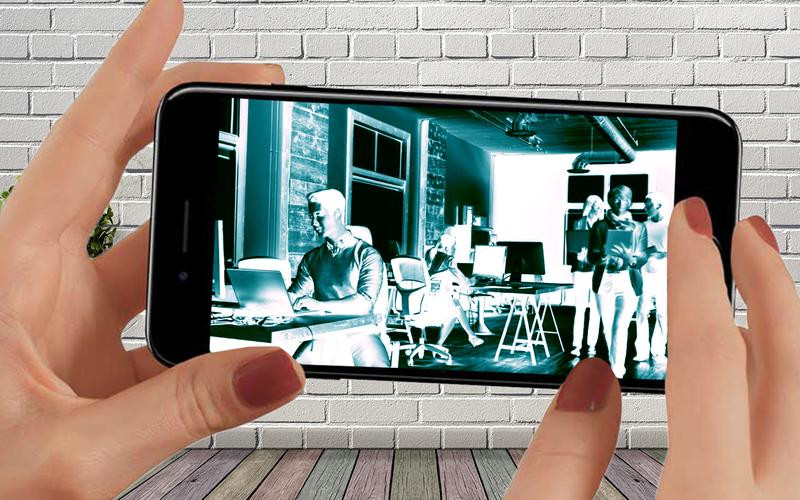What benefits does smart lighting technology bring to future cities?
Smart lighting technology, with the ability to integrate advanced technology into traditional lighting systems, has emerged as a “golden key” opening the door to a civilized, safe and sustainable urban future.
What is smart lighting technology?
Smart lighting technology is a system that uses electronic devices and software to control and automate lighting systems. It includes light bulbs, switches, sensors and controllers that are connected to each other via a wireless network or the internet.
The history of smart lighting dates back to the early 2000s. Advances in LED technology offer significant advantages over traditional lighting sources such as lower energy consumption, longer life, and better control.
With the advent of the Internet of Things (IoT) in the 2010s, the benefits of smart lighting were truly enhanced, leveraging advanced sensors, networking and automation to increase energy efficiency as well as improve system safety.
In an era of rapid urbanization, the need for innovative and efficient solutions for city management is becoming increasingly urgent. Combining energy-saving LEDs, intelligent sensors and automated control systems, smart lighting offers a myriad of outstanding benefits, completely transforming the appearance of cities.

The benefits of smart lighting technology
1. Energy saving:
The core of smart lighting systems is the ability to automatically adjust lighting based on actual conditions.
Traditional street lighting systems operate on fixed schedules. This often results in unnecessary lighting during low activity periods. Whereas smart lighting automatically adjusts to actual needs based on real-time conditions.
Sensors detect movement, ambient light levels, and even traffic conditions, so energy-efficient LEDs can dim, brighten, or turn off completely in response to their surroundings.
This adaptability not only reduces energy consumption but also extends the life of lighting fixtures. Furthermore, the ability to remotely monitor and manage lighting systems enables proactive maintenance, minimizing downtime and improving energy efficiency.
The Indonesian city of Jakarta is a prime example of how smart lighting can save energy. After implementing a smart lighting system that combines energy-saving LED lights, smart sensors, and automated control systems, Jakarta has recorded energy savings of up to 70%.
This impressive achievement is a clear demonstration of the ability of smart lighting to optimize energy use, contribute to environmental protection and reduce operating costs for the city.
Jakarta’s success in adopting smart lighting is an inspiration for other cities around the world. Investing in smart lighting systems not only brings economic benefits but also contributes to building a more sustainable and livable urban environment.
2. Improve public safety:
Smart lighting contributes to public safety by improving visibility in urban areas. Accordingly, smart lighting systems can adjust brightness and lighting direction according to actual needs, ensuring the best visibility for pedestrians, cyclists and drivers, especially in low light conditions.
Well-lit roads and public spaces have been shown to deter crime. Smart lighting systems can be programmed to automatically increase brightness when suspicious activity is detected or an emergency call is received, helping to deter criminals and assist law enforcement.
Smart lighting systems can integrate with surveillance cameras and other security devices, providing authorities with real-time images and data about what is happening in the city. This helps improve monitoring, crime detection and rapid response to security incidents.
In addition, smart lighting systems can also support emergency operations. For example, in the event of a natural disaster or emergency, smart lighting systems can be used to guide people to evacuate and support rescue operations.
Overall, smart lighting is a powerful tool that can help improve public safety in a city in many ways. Investing in smart lighting systems is a smart decision that will bring long-term benefits to the community.
3. Smart urban management:
Smart lighting can promote sustainability and environmental stewardship by reducing energy consumption and greenhouse gas emissions. It can also be used to collect data for urban planning purposes, providing insights into air quality and noise, pedestrian and vehicle traffic patterns, and other metrics that help inform decision-making.
Some cities are using smart lighting grid infrastructure for broader applications, such as electric vehicle charging, parking availability notifications, and public information displays.
Additionally, smart lighting deployments often coincide with the implementation of other smart city initiatives, such as intelligent transportation systems and waste management solutions.
Challenges in implementing smart lighting systems
Despite the many benefits, implementing smart lighting systems also poses some challenges that need to be addressed:
1. High initial investment cost:The costs of equipment, software, management systems and installation of smart lighting systems are often higher than those of traditional lighting systems. This can create a barrier to widespread adoption, especially for cities and regions with limited budgets.
2. Infrastructure issues:Implementing smart lighting systems may require upgrading existing electrical infrastructure and communications networks, especially in older areas. These upgrades can be costly and time-consuming.
3. Cybersecurity concerns:Smart lighting systems include many internet-connected devices, potentially vulnerable to cyber attacks. Ensuring network security for the system is extremely important to protect data and prevent unauthorized access.
4. Shortage of human resources:The operation and maintenance of smart lighting systems requires a team of staff with expertise in information technology and automation. However, there is currently a shortage of human resources with this expertise, especially in localities.
5. Change habits:Adopting smart lighting systems may require people and businesses to change their lighting habits. This transition may encounter some obstacles due to personal habits and preferences.
6. Legal framework:The lack of clear regulations and standards for the implementation and use of smart lighting systems can lead to inefficient use or even safety issues. A suitable legal framework is needed to ensure the systems are used safely and effectively.
Besides the above challenges, the implementation of smart lighting systems also requires commitment and cooperation from many stakeholders, including local authorities, businesses, people and research organizations.
With the right effort and solutions, these challenges can be overcome and smart lighting systems can realize their full potential in creating smarter, safer, more efficient and sustainable cities.
As cities grow and change, the need for smart lighting solutions is expected to increase. Advances in technology, such as the proliferation of 5G networks, embedded SIM cards (iSIMs), and the development of more sophisticated sensor technologies, will increase the capabilities and scalability of smart lighting systems.
In short, smart lighting is a practical solution to the problem of energy saving and sustainable urban development. With its outstanding benefits, smart lighting promises to become an inevitable trend in the future, contributing to creating a bright future for cities around the world.






